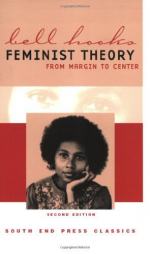
|
| Name: _________________________ | Period: ___________________ |
This quiz consists of 5 multiple choice and 5 short answer questions through Chapter 1.
Multiple Choice Questions
1. What is the social and racial dynamic described by the author at the beginning of the Preface to the first edition of the book?
(a) Upward mobility: Blacks strove to imitate whites and climb the social ladder.
(b) Desegregation: Blacks were finally able to go wherever they wanted.
(c) The author does not discuss race until the end of the Preface.
(d) Segregation: Black people could enter parts of the white people's world, but they could not stay there.
2. In Chapter 1, the author states that feminist theory and the feminist movement were originally shaped by which type of people?
(a) Working-class women.
(b) Middle-class white women.
(c) Middle-class women.
(d) Expatriates living abroad.
3. The author cites Lillian Hellman's autobiography as an example of what kind of phenomenon?
(a) An early white feminist who listened to women of color.
(b) An rare example of working class writing.
(c) White women projecting mythical power and strength on black women while presenting themselves as powerless.
(d) White women being afraid to tell their domestic servants what to do.
4. In the author's view, what three things most determine a woman's destiny?
(a) Her alma mater, her first job, and who she marries.
(b) Gender, race, and class.
(c) Her race, her gender, and who she marries.
(d) Who she marries, her appearance, and her family name.
5. What was the author's initial experience in women's groups?
(a) No one would look at her.
(b) She found solidarity with women from very different backgrounds.
(c) Everyone was really open-minded.
(d) White women did not treat women of color as equals.
Short Answer Questions
1. In the Preface to the second edition (2000), how does the author describe the original reception of her book?
2. At the end of the Preface (2000), what does the author say regarding "patriarchal mass media" and feminism?
3. As stated in the 1984 Preface, what is the primary weakness of feminist theory that the author promises to address in her book?
4. How does the author characterize black women's future role in the feminist movement?
5. According to the author, in Chapter 1, "Black Women - Shaping Feminist Theory," what were black feminists initially trying to do in the feminist movement?
|
This section contains 516 words (approx. 2 pages at 300 words per page) |

|




